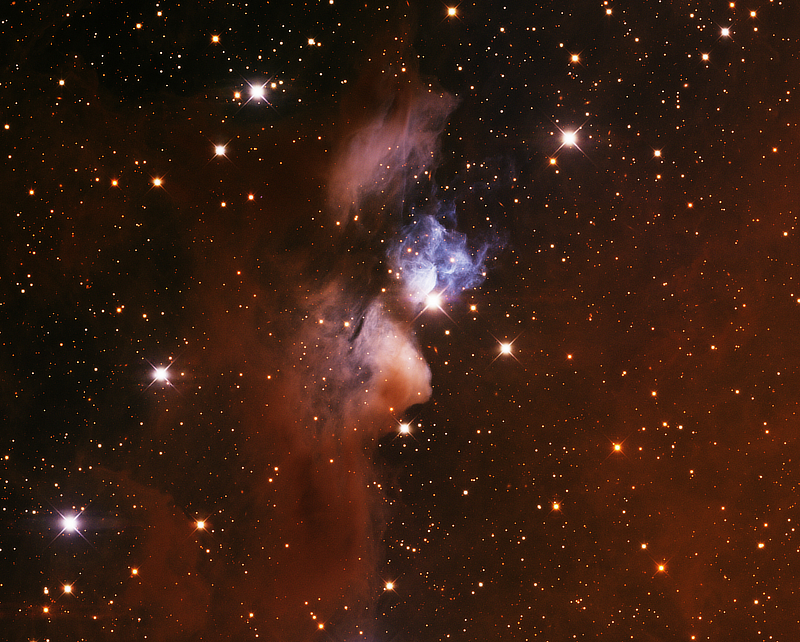November 2024 - Picture of the Month
Van den Bergh 24 and XY Persei in Perseus

So more glowing dusty goodness in my Picture of the Month, I should think that you can probably see a long term trend by now. This image from the Mosaic camera on the Mayall 4-meter telescope at Kitt Peak National Observatory provides another look at star creation. We have a dark nebula (LDN 1442) to the left of the blue reflection nebula which is illuminated by the bright star emerging just below.
That star is XY Persei, which is a type INA variable star, one of the Orion variables of early spectral types (A2II+B6e in this case) that are noted for their abrupt Algol-like instances of fading. Normally around magnitude 9 this star fades to somewhere near 11th magnitude, so it's a visual observing target as well as photometric.
Although it isn't obvious in this image, SIMBAD Astronomical Database reveals that XY Persei is also a double star which the Washington Double Star catalog gives as HU 1067 with the component magnitudes of about 9.7 and 10.6. The separation is 1.30 arc-seconds which hasn't changes much between 1904 and 2015.
As I mentioned above, it's this star that's responsible for the reflection nebula that's just above it in this image, and that's known as Van den Bergh (VdB) 24. I guess that VdB 24 itself isn't that easy to image in detail. Most of the images I've found are wide-field, but then the nebula is only around 9 arc-minutes across and quite faint. That's why I've gone for a professional image that reveals a wealth of detail.
Frankly, there's not a lot of information available for the nebula itself, but it can be observed visually as a brief discussion on the Deep Sky Forum shows, as does its inclusion in Reiner Vogel's Young Stellar Objects guide, which is mentioned in that thread and available for download from his website, which also has a nice article about these objects. I expect that it'll need a large telescope to see much of the nebula since Reiner was using a 22 inch Newtonian and the observation in The Night Sky Observer's Guide (NSOG) Volume 4 recommends 16–18 inch telescopes.
James Whinfrey - Website Administrator.